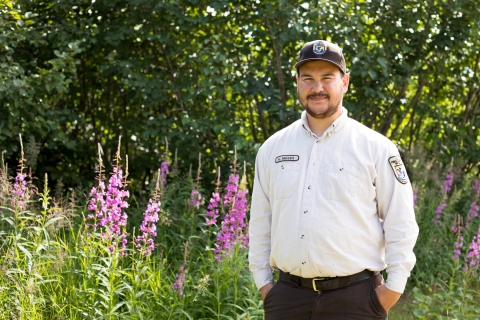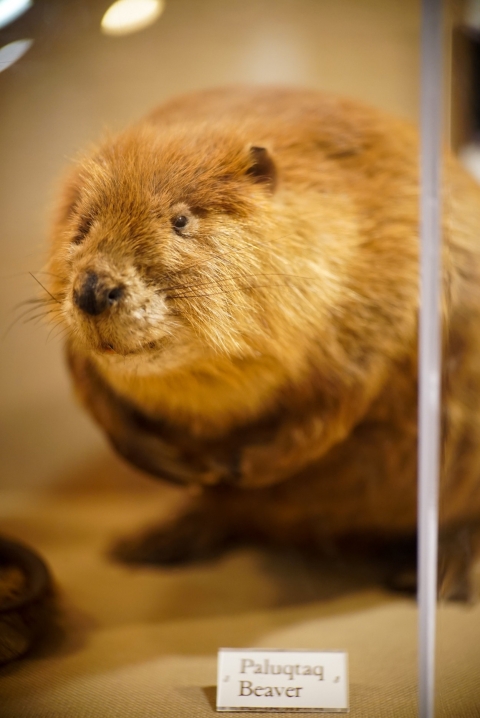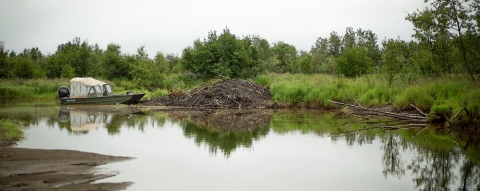Left to their own devices, rivers change constantly. Snaking side-to-side across floodplains over ages, they eat the land away and deposit it elsewhere. Both beavers and fish are all too familiar with their fickleness and power: change swings in favor of some species and life stages one year and others the next. Western Alaska’s Kwethluk River is no exception.
Aaron Moses grew up in Toksook Bay, Alaska. He now lives in Bethel (a community of 6,000) where he’s the Fisheries Biologist for Yukon Delta National Wildlife Refuge (our nation’s second largest). The Kwethluk is his backyard.
“Around here, a new channel forms along the river every spring and a lot of back-channels dry up. Beavers end up moving a lot because the channels change and their dams dry up or there’s now more flow.”
Travis Hedrick, the Kwethluk River weir crew leader in 2017 and 2018, also noted change as we looked for beaver dams one evening.
“I see a lot of changes. There are lodges here this year that weren’t here last year. And vice versa. A lot of areas that I knew were clogged up by beaver dams on side channels are no longer that way.”
Beaver Basics
Beavers have a clever way of avoiding predators: they build tough-to-break-into homes with underwater entrances. These brilliant engineers can profoundly change the environment around them to accomplish this goal. Depending on site location, beavers can quickly dam flowing water to raise its level above their lodge’s entryway. It’s not always necessary, though: rivers with naturally deep slackwaters don’t require dams.
A typical lodge houses a monogamous pair of beaver adults and their offspring. Yearlings depend on their parents for food (grasses, cottonwood, birch and willows) and learn life skills from older family members. Two-year-olds help with building food caches, repairing dams and lodges, and feeding, grooming, and guarding their younger siblings.
Beavers tend to be a positive force in the early lives of fish. Juvenile fish seeking refuge from high spring flows often move into slower moving off-channel habitat where beavers also prefer to be. For Coho Salmon that stay in freshwater for a number of years before migrating to sea, a beaver dam offers a safe summer nursery protected from hungry Rainbow Trout and Dolly Varden char.
That said, beaver dams can restrict fish migration at times, particularly during low flows. Like fish, however, beaver dams are at the mercy of a river’s constant changes. During high flows, they’re routinely overtopped, submerged, washed away, or otherwise in need of plugging. Fish seize these opportunities to move, whether it’s adult salmon migrating upstream, whitefish looking to move back out into the mainstem, or juveniles seeking better feeding or overwintering areas.
Randy Brown, a long-term Alaskan and fish biologist who specializes in whitefish and other northern fishes explains:
“What’s good for juvenile fish isn’t necessarily good for adults. And the things that are good for one species might not be the same things that are good for another.”
And that’s actually ok.
"This diversity of habitats in and among the wild river systems is a good thing. It just flat out is. Some areas will promote some species and some areas will promote others. Beaver dams are just part of the landscape and they’ve always been there for as long as we know of history up here. And they always will."
In Alaska we are shared stewards of world renowned natural resources and our nation’s last true wild places. Our hope is that each generation has the opportunity to live with, live from, discover and enjoy the wildness of this awe-inspiring land and the people who love and depend on it.











